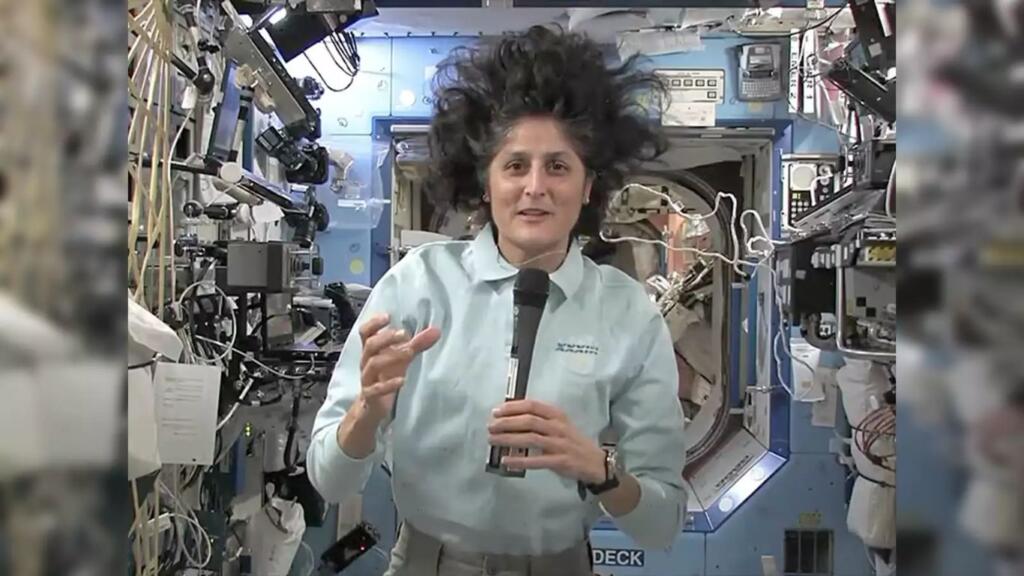The Indian-origin astronaut Sunita Williams will not return to the earth in February 2025, the date given by NASA earlier.
This marks the extension of her space visit for nine-long months after she flew from earth for an 8-day mission in June this year.
What has happened so far?
In June, Sunita along with Butch Willmore reached the International Space Station (ISS) Boeing’s Starliner spacecraft on its first crewed mission. The mission was to test the readiness of the Starliner for space missions. Initially scheduled for 8-days, their return prolonged after Starliner faced thruster malfunctions and Helium leaks and returned without crew to the earth.
NASA founded a solution for their return in a new Crew-9 mission. The space agency’s SpaceX Crew-9 missions using Dragon spacecraft with two astronaut named, Nich Hagus and Russian cosmonaut Alexander Gorbunov along with two vacant seats for both Williams and Willmore lifted off from Cape Canaveral in September for the orbital laboratory.
The latest delay comes as the Crew-9 is set to be replaced by Crew-10 and the lift off of which is delayed. The Crew-10 mission has been extended till the completion of the new Dragon spacecraft. The space agency deemed it as the best option for meeting NASA’s requirements and achieving space station objectives for 2025.
“NASA’s SpaceX Crew-10 is now targeting no earlier than late March 2025 to launch four crew members to the International Space Station,” the US space agency said.
Intially, called as space visitors, Williams and Willmore were added to space agency’s Expedition 71/72 crew.
What effects would prolonged space stay have on William’s health?
Astronauts are trained to be in the space to complete their mission objectives. However, the space has nearly zero gravity for which it affects the body adversely.
Due to long stay, the bone density significantly reduced making the bones brittle. Similary, organs like eyes, heart also witness effects. The mass of the body also gets reduced because of weightlessness. These changes come to the body because it is essentially made for earth’s gravity.
However, these changes are reversed once the astronauts return to earth. Regarding William’s health, the space agency recently denied rumours of her illness and stated that Williams was doing fine in the space.
According to fresh update from the Williams along with other astronaut, Butch Willmore and Roscosmos cosmonaut Aleksandr Gorbunov were part of NASA’s SpaceX Crew 9 mission and will return after Crew 10 mission will arrive at the orbital laboratory.
How will Williams survive?
The ISS is a space home for astronauts. An expedition permanently remains in the space with each time a new crew reaches and older retreats. Due to prolonged stay, Williams has been added to the Expedition 71 crew and was later made the commander of Expedition 72 crew when Expedition 71 ended in September. So, the space agency keeps the essential supplies like food, oxygen, cloths and other things intact. According to NASA, two resupply flights in November fed the ISS with essential supplies including, special items for the crew to celebrate the holidays aboard the orbital platform.
